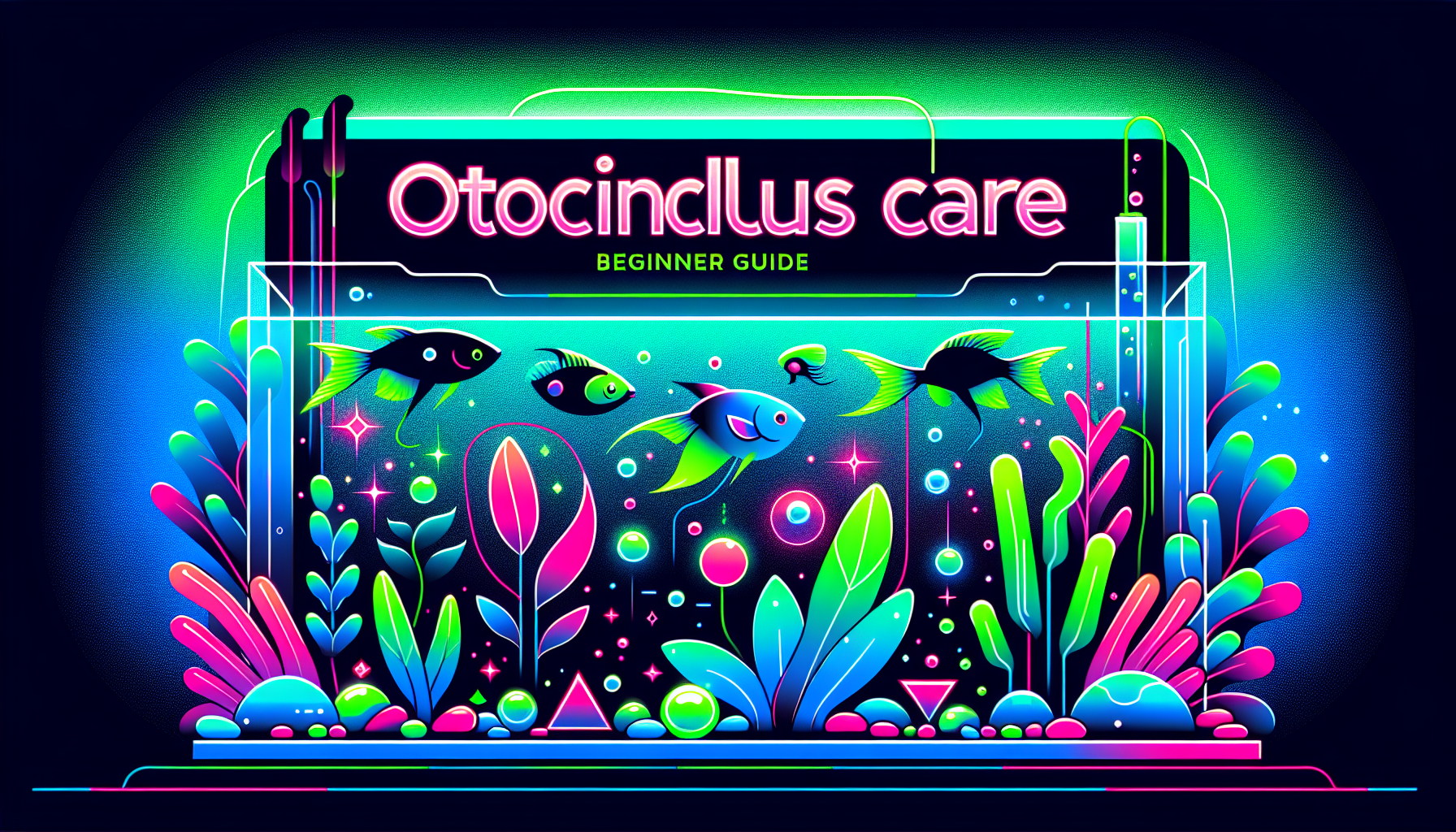How to Otocinclus Care (Beginner Guide)
Otocinclus catfish, affectionately known as Otos, are some of the most beloved algae-eating fish in the aquascaping hobby. Their small size, gentle nature, and effectiveness at controlling algae make them an excellent addition to planted aquariums. If you’re new to aquarium keeping, this beginner guide will walk you through every step of Otocinclus care—from tank setup to feeding, tank mates, and essential tips for success in your aquascape.
Why Choose Otocinclus for Your Aquascaped Aquarium?
- Natural algae cleaners: Otos eat soft algae, helping to keep your tank and plants spotless.
- Peaceful temperament: Perfect companions for shrimp and other small community fish.
- Small size: Maximum length of 1.5–2 inches, perfect for nano aquascapes.
- Active and entertaining: Otos are lively and often seen cleaning plant leaves, hardscape, and glass.
If you’re building a beginner-friendly aquascape or looking to keep your planted aquarium healthy, Otocinclus are an excellent choice.
Ideal Tank Setup for Otocinclus
Minimum Tank Size
While Otocinclus are diminutive, they are social and do best in groups. A minimum tank size of 10 gallons is recommended for a small group (4–6 fish). Larger tanks are even better, especially for well-established aquascapes.
Planted Aquarium Essentials
- Live plants: Provide hiding spots and biofilm for grazing. Java fern, Cryptocoryne, and Anubias are excellent choices.
- Hiding places: Driftwood, rockwork, and dense plant growth help Otos feel secure.
- Gentle filtration: Use sponge filters or gentle flow to avoid stressing these sensitive fish.
Water Parameters
| Parameter | Optimal Range |
|---|---|
| Temperature | 22–26°C (72–79°F) |
| pH | 6.5–7.5 |
| Hardness | Soft to moderately hard (2–15 dGH) |
| Ammonia/Nitrite | 0 ppm (critical for Otocinclus health) |
| Nitrate | < 20 ppm |
Tip: Otocinclus are sensitive to poor water conditions. Always keep your tank cycled and maintain regular water changes.
How to Acclimate Otocinclus Catfish
Otos are delicate, especially when first introduced. Use the drip acclimation method to slowly adjust them to your aquarium’s water parameters:
- Float their bag in the tank for 20–30 minutes to equalize temperature.
- Slowly add small amounts of tank water to their bag over 1–2 hours.
- Gently net them into the aquarium. Avoid adding shipping water to your tank.
Feeding Otocinclus: Diet and Nutrition
While Otocinclus catfish are renowned for their algae-eating habits, they still need supplemental feeding to stay healthy in a planted or aquascaped tank.
Best Foods for Otocinclus
- Algae and biofilm: Naturally occurring in mature, planted tanks.
- Blanched vegetables: Zucchini, spinach, cucumber, and green beans are favorites.
- Sinking wafers: Algae wafers or spirulina tablets designed for bottom feeders.
Feeding Tips
- Supplement if visible algae is scarce.
- Remove uneaten vegetables after 24 hours to prevent water quality issues.
- Feed 2–3 times per week in addition to available tank algae.
Choosing Tank Mates for Otocinclus
Otos are peaceful and best kept with non-aggressive fish and invertebrates. Ideal tank mates include:
- Dwarf shrimp (Amano, Cherry)
- Small rasboras and tetras
- Corydoras catfish
- Other peaceful species common in community or aquascaped setups
Avoid boisterous or predatory fish such as cichlids, large gouramis, or goldfish, as they may outcompete or stress Otocinclus catfish. See our guide to the best fish for planted aquariums for more inspiration.
Common Otocinclus Care Tips
- Schooling behavior: Keep Otos in groups of at least 4–6 for comfort and natural activity.
- Stable water quality: Perform regular partial water changes (20–30% weekly).
- Monitor for stress: Pale color, inactivity, or gasping at the surface indicate stress or poor water conditions.
- Provide hiding spots: Dense plants and driftwood are essential for their well-being.
Beginner FAQ: Otocinclus Catfish
Are Otocinclus hard to keep?
With proper water conditions and a mature, planted tank, Otos are hardy. However, they are sensitive to ammonia and sudden changes, so stability is key.
How big do Otocinclus get?
Most Otocinclus species reach just 1.5–2 inches in length, making them perfect for nano and mid-sized aquascapes.
How many Otocinclus should I keep together?
Always keep at least 4–6 Otos together. They are social and thrive in groups.
How long do Otocinclus live?
With good care, Otos can live 3 to 5 years in a planted aquarium.
Conclusion: Your Beautiful, Healthy Aquascape with Otocinclus
Caring for Otocinclus catfish is rewarding and enjoyable. By providing the right environment, diet, and tank mates, you’ll keep your Otos healthy, and your aquascape algae-free. Whether you’re creating your first planted aquarium or are an experienced aquascaper, Otocinclus make an excellent addition to any peaceful community tank.
Ready to create a stunning aquascape? Contact us for personalized advice, or explore our aquascaping guides for more inspiration and expert tips!



